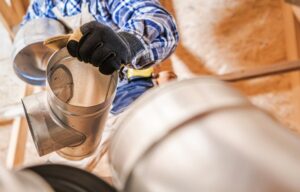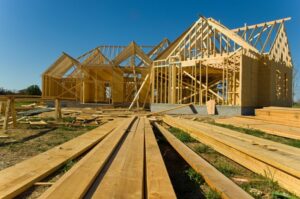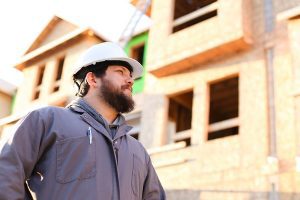Buyers want to know what to expect when purchasing new-construction homes. Their expectations are usually much higher than with pre-owned homes. The better you can set expectations, the better your transactions will go. Let’s look at how a structural warranty administered by 2-10 Home Buyers Warranty (2-10 HBW) helps set expectations with your buyers. We’ll also show you how a structural warranty can help set expectations for yourself.
A warranty helps set expectations about common workmanship issues

Sometimes, buyers may take issue with the workmanship or distribution systems within the home you build. What’s even more frustrating is that the things they’re taking issue with may seem nit-picky. For example, you may receive a complaint about a nail pop, cracked drywall, or the home’s ductwork “being too loud.” A warranty helps clearly set expectations for those kinds of issues.
These problems typically crop up because buyers have different (sometimes unrealistic) expectations about workmanship and distribution systems. A written warranty clearly states what you’re responsible for and what you aren’t. Having these parameters written down is a huge benefit to builders like you. It educates your buyers while protecting your work product and reputation.
When buyers know what to expect, they’re less likely to ask you to address issues that aren’t truly issues at all. That can save you time and money.
A structural warranty will set expectations about the home’s structure

Most buyers have certain expectations when considering a new-construction home. They expect that the house itself won’t sink, sag, or buckle under any circumstances. But some buyers also inaccurately expect the house to remain in pristine condition, just like when they bought it.
Inaccurate expectations—such as stucco that won’t ever crack or concrete that won’t shift even an inch—can create frustration for buyers. Sometimes, buyers may aim that frustration at you, the builder. While this is sometimes a mere annoyance, it can also cost you time and money addressing the issue, and can even unfairly harm your reputation.
A 2-10 HBW Structural Warranty can set expectations for buyers by helping them understand what a builder is responsible for regarding the home’s structural integrity. It defines what a load-bearing element is, which takes much of the guesswork out of the process. It provides specific language that determines whether you are responsible for addressing issues. Most importantly, it’s in writing, which can override confusing or inconsistent implied warranties.
A 2-10 HBW Structural Warranty includes solutions for structural problems

The average cost to address a structural problem is $70,000. When a qualified structural defect occurs, buyers will expect you to have a solution. A structural warranty lets you show buyers that you do indeed have a solution.
Better still, with a 2-10 HBW Structural Warranty, you’re getting third-party validation of your work and your solution to structural problems. That’s because when a qualified structural defect occurs, 2-10 HBW finds the right contractors to address it. Third-party validation from the industry leader in structural warranties is a powerful way to set expectations for your buyers.
It lets you set expectations for your future

A 2-10 HBW Structural Warranty is a strong tool to set expectations for your clients. That goes a long way in protecting your reputation and making buyers comfortable with their purchase. But it also lets you set expectations for your future, too.
Recall how expensive the average structural defect is to address ($70,000). It’s not uncommon for builders to experience multiple structural defects across several houses in one area. A structural warranty can take multiple risks off your plate. That means less time worrying about what you’d do if you had multiple structural defects at once.
A structural warranty can also help you focus on what you do best—building quality homes. Every time a buyer calls you with a question or concern about a potential structural defect—whether it’s an actual defect or not—it costs you time. When you choose 2-10 HBW as a Builder Member, you can reduce unnecessary callbacks and offer top-notch customer service.
Finally, a structural warranty can keep you out of the courtroom. A 2-10 HBW Structural Warranty includes binding arbitration language, which means you’ll settle any disputes with homeowners outside of court.
Conclusion

Setting expectations is critical to your success, and a 2-10 HBW Structural Warranty is a powerful way to set expectations. It helps your buyers understand which kinds of structural defects you’re responsible for addressing. It provides a clear solution to qualified structural defects, which gives your buyers confidence. And a structural warranty can help you set expectations for your future as well.
Learn how you can protect your business and add valuable selling points to your new builds with a 2-10 HBW Structural Warranty.
Related content
How a Structural Warranty Builds Trust With Prospects








